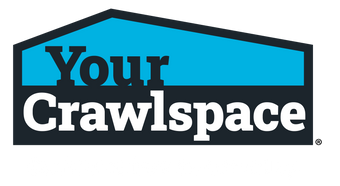How to Buy the Best Crawlspace Moisture Meter
Tips from a Crawlspace Industry Expert
Moisture meters are instruments used in the home inspection industry to measure the moisture content of material such as wood, masonry, and drywall. They’re also known as a Protometer or Protimeter. Other industries—such as the forestry and furniture industries—also use them to measure moisture content, as well.
A moisture meter plays a vital role in our ability as inspectors. They allow us to properly gather information for identifying moisture issues in structures and determining to what extent the moisture content is affecting the structural component at the time of the inspection.
Is There a Doctor in the House?
Think about this: one of the first things a nurse does when you go to the doctor is to take your temperature with a thermometer. A thermometer measures your body temperature, and that measurement gives doctors information they use to help diagnose whatever it may be that is causing you to feel bad. The moisture meter is very similar. It allows inspectors to diagnose what is causing issues in a client’s house.
Moisture Meters 101
There are two types of moisture meters: pin-type and pinless. There are also combination meters that will give you both pin-type and pinless functionality. The pin-type meter has a pair of sharp pins (needles) that can be inserted into the surface of the material being tested. The pinless meter has a sensor pad that is placed on the surface of the material being tested. The pin-type is intrusive while the pinless is not.
To determine which meter to use, I suggest being aware of what material you are testing and the location of the material. Using a pin-type meter in a customer’s living room where the pinholes would be noticeable might be concerning to the customer, whereas leaving two small puncture holes would not be of any concern in a crawlspace. For these reasons, I suggest having at least one of each type or a combination meter.
Choosing the Right Meter
Not all moisture meters are equal regarding performance. Some moisture meters are more accurate than others. According to some research I found on the internet, and my own experience with a variety of moisture meters, there can be a wide variance in accuracy, and this could have a significant bearing on a correct diagnosis and impact your ability to offer proper recommendations for your client. I recommend a high-end meter that has an accuracy variance of 0.01%.
Moisture meters are available in a wide range of sizes and colors, with options like digital readouts or color-coded light systems indicating moisture level. There are numerous manufacturers, and prices range from $25 for a simple moisture meter to $9,650 for a moisture meter test kit that tests different materials including concrete. My suggestion is for you to look for a meter that gives consistent readings at a reasonable price and would best fit your needs and resources. Keep in mind, there are some reasonably reliable moisture meters that, while they may be over your budget, would be well worth the investment in the long run.
Calibrating for Success
An accurate, well-performing meter is a vital inspection tool. If you are not sure your moisture meter readings are accurate and consistent, there are a couple of tests you can do to find out. Before testing, always check your unit to make sure the batteries are at peak efficiency. Faulty batteries can cause an otherwise good meter to function poorly.
One way to test and calibrate your moisture meter is to use the manufacturer’s testing procedures and components, usually supplied with the meter itself. Pin-type meters often come with a test strip that indicates the reading your meter should show when the pins are put into contact with the test strip. If the meter indicates the baseline readings of the test strip then your meter is functioning within the manufacturer’s guidelines. If the reading is several points over or under the baseline, then you must troubleshoot the discrepancy and make a decision to have the meter repaired or purchase another one.
Another way of testing for accuracy is to insert your meter’s pin into a block of wood and get a baseline reading. Pull the meter pins out and wait a few seconds for the meter to reset, then insert the pins again in the same area. You should get the same reading or close to the first reading, if the reading is within a point or two either way, the meter is okay, you are wanting consistency. If your second reading is several points apart from the first reading, repeat to verify, make sure to allow enough time for the meter to reset. If the reading is still several points apart, don’t use the meter again, until it is repaired or you’ve replaced it.
Moisture Meters: A Crawlspace Secret Weapon
To summarize: based on your budget and needs, research and purchase a moisture meter that will be accurate and dependable, durable, and easy to maintain. Test and calibrate your meter frequently. The best time to test and calibrate your equipment is before you get to the jobsite. Have a backup meter for each type. Care for your equipment by keeping it clean and storing it properly; this will extend the life of the unit and protect your investment.
Moisture meters are an essential diagnostic tool in our industry. They provide us with critical information necessary in making plans that solve our clients needs.
If you have any questions about moisture control and moisture control products please contact the professional team at Your Crawlspace Inc., at www.yourcrawlspace.com. YCS has years of experience in the moisture control industry, and their team has developed patented crawlspace moisture control products and an installation system that is tried and proven to work.
Don Richards ACE, CPI

